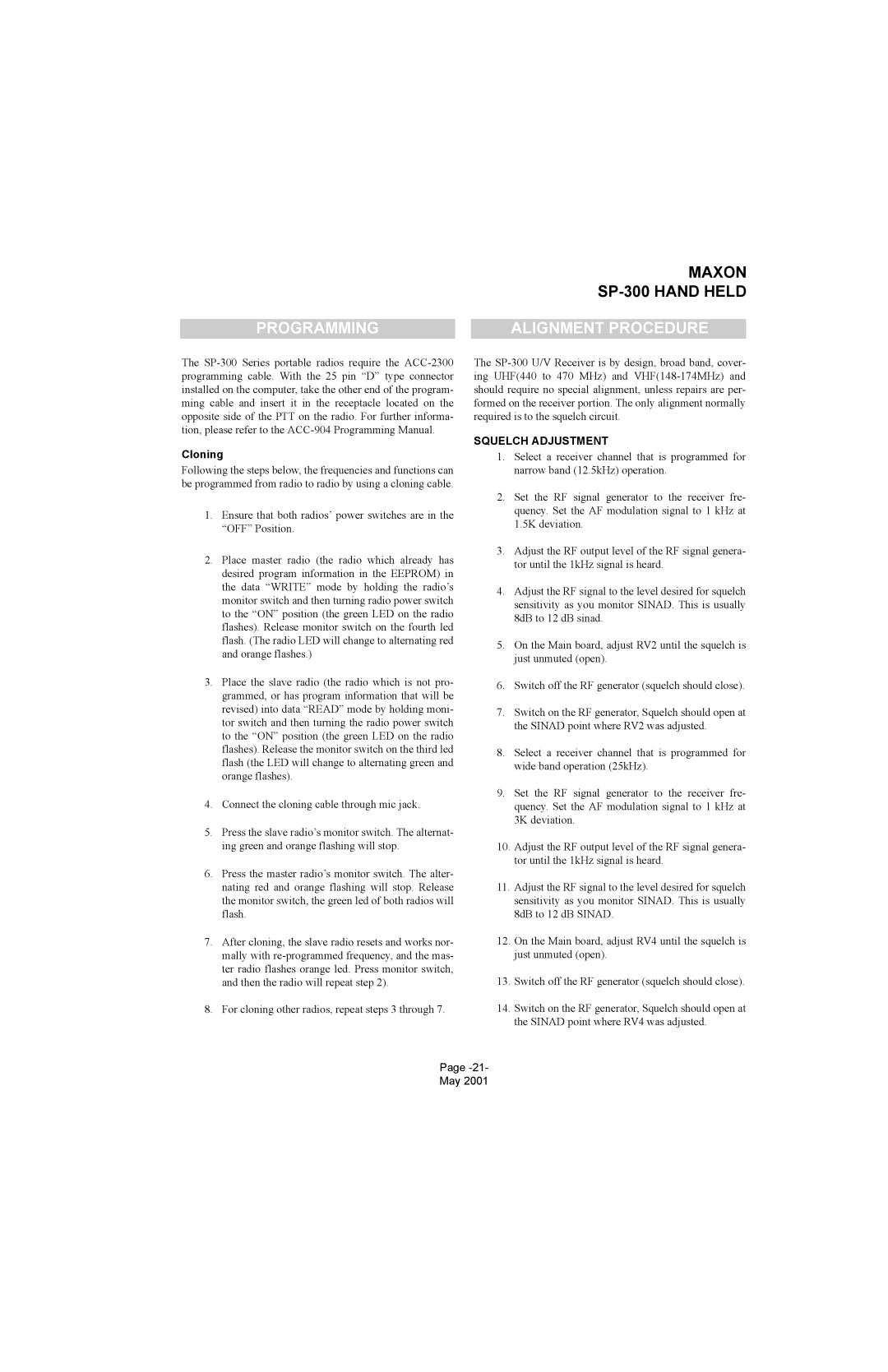PROGRAMMING
MAXON
ALIGNMENT PROCEDURE
The
The
SQUELCH ADJUSTMENT
Cloning
Following the steps below, the frequencies and functions can be programmed from radio to radio by using a cloning cable.
1.Ensure that both radios’ power switches are in the “OFF” Position.
2.Place master radio (the radio which already has desired program information in the EEPROM) in the data “WRITE” mode by holding the radio’s monitor switch and then turning radio power switch to the “ON” position (the green LED on the radio flashes). Release monitor switch on the fourth led flash. (The radio LED will change to alternating red and orange flashes.)
3.Place the slave radio (the radio which is not pro- grammed, or has program information that will be revised) into data “READ” mode by holding moni- tor switch and then turning the radio power switch to the “ON” position (the green LED on the radio flashes). Release the monitor switch on the third led flash (the LED will change to alternating green and orange flashes).
4.Connect the cloning cable through mic jack.
5.Press the slave radio’s monitor switch. The alternat- ing green and orange flashing will stop.
6.Press the master radio’s monitor switch. The alter- nating red and orange flashing will stop. Release the monitor switch, the green led of both radios will flash.
7.After cloning, the slave radio resets and works nor- mally with
8.For cloning other radios, repeat steps 3 through 7.
Page
May 2001
1.Select a receiver channel that is programmed for narrow band (12.5kHz) operation.
2.Set the RF signal generator to the receiver fre- quency. Set the AF modulation signal to 1 kHz at 1.5K deviation.
3.Adjust the RF output level of the RF signal genera- tor until the 1kHz signal is heard.
4.Adjust the RF signal to the level desired for squelch sensitivity as you monitor SINAD. This is usually 8dB to 12 dB sinad.
5.On the Main board, adjust RV2 until the squelch is just unmuted (open).
6.Switch off the RF generator (squelch should close).
7.Switch on the RF generator, Squelch should open at the SINAD point where RV2 was adjusted.
8.Select a receiver channel that is programmed for wide band operation (25kHz).
9.Set the RF signal generator to the receiver fre- quency. Set the AF modulation signal to 1 kHz at 3K deviation.
10.Adjust the RF output level of the RF signal genera- tor until the 1kHz signal is heard.
11.Adjust the RF signal to the level desired for squelch sensitivity as you monitor SINAD. This is usually 8dB to 12 dB SINAD.
12.On the Main board, adjust RV4 until the squelch is just unmuted (open).
13.Switch off the RF generator (squelch should close).
14.Switch on the RF generator, Squelch should open at the SINAD point where RV4 was adjusted.
